Orchids - theory and practice (last part)
In the previous articles I wrote about the diet of orchids. I tried to illuminate the current state of affairs from a theoretical point of view and then to collect and present experiences of orchid cultivation in my greenhouse over a longer period of time if possible.
My idea was to cultivate the orchids as naturally as possible. For this reason, I made aqueous extracts from various composts and watered my orchids with them. As the articles in the last issues of our magazine show, this type of fertilization has given good results for all bulbous orchids in the 2019/2020 season. On the other hand, I was not completely satisfied with the growth results of paphios and phalaenopses. This may be due to the fact that these species hardly had any roots in the previous substrate. Therefore, I have also applied a foliar fertilizer.
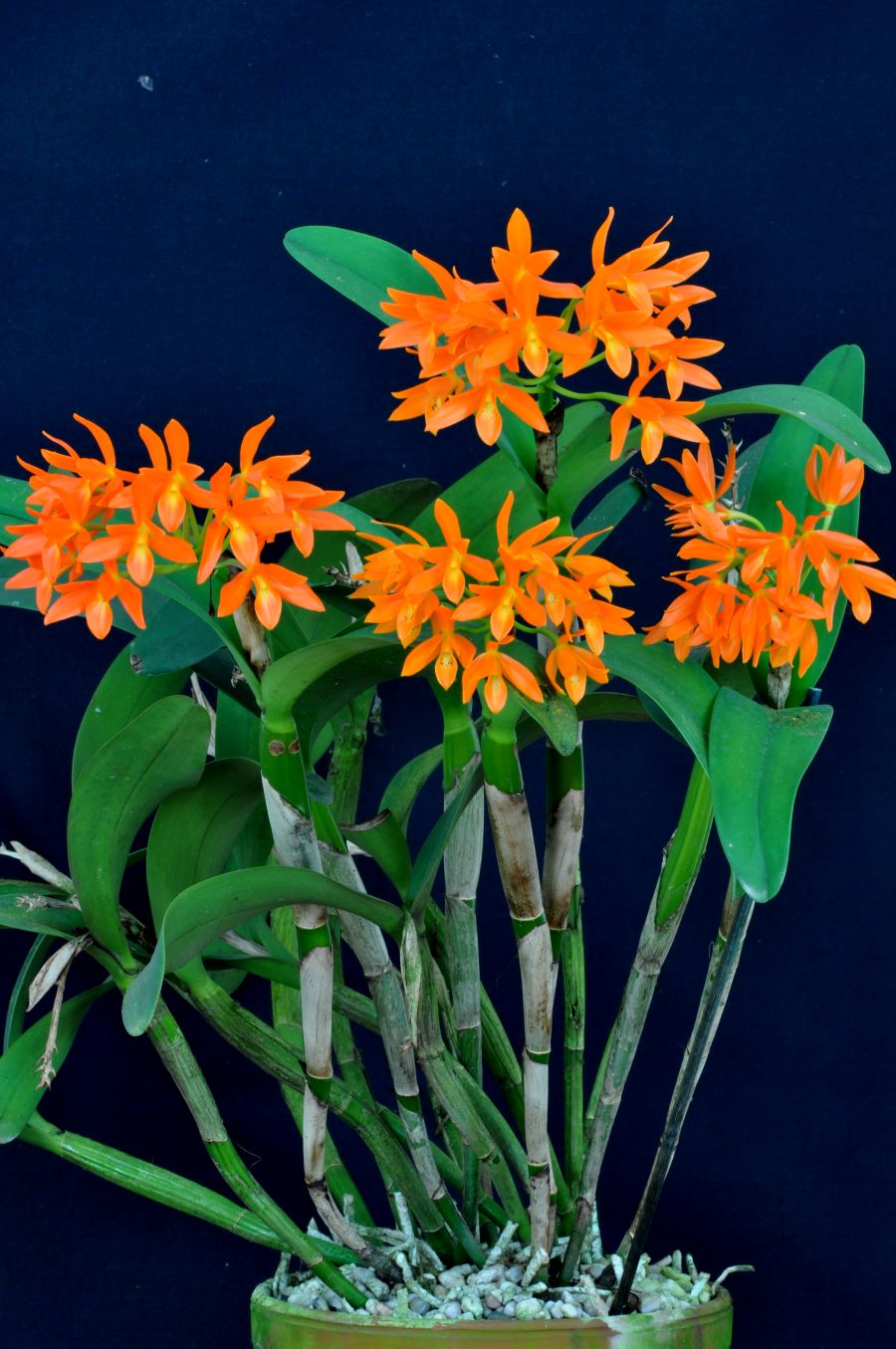
It has been scientifically proven that orchids can also benefit from foliar fertilization. For this purpose, nutrients such as nitrogen or phosphorus have been radioactively marked and the orchids have been fertilized with them via the leaf. An increased proportion of the labeled nutrients could be detected in the plant sap for a short time.
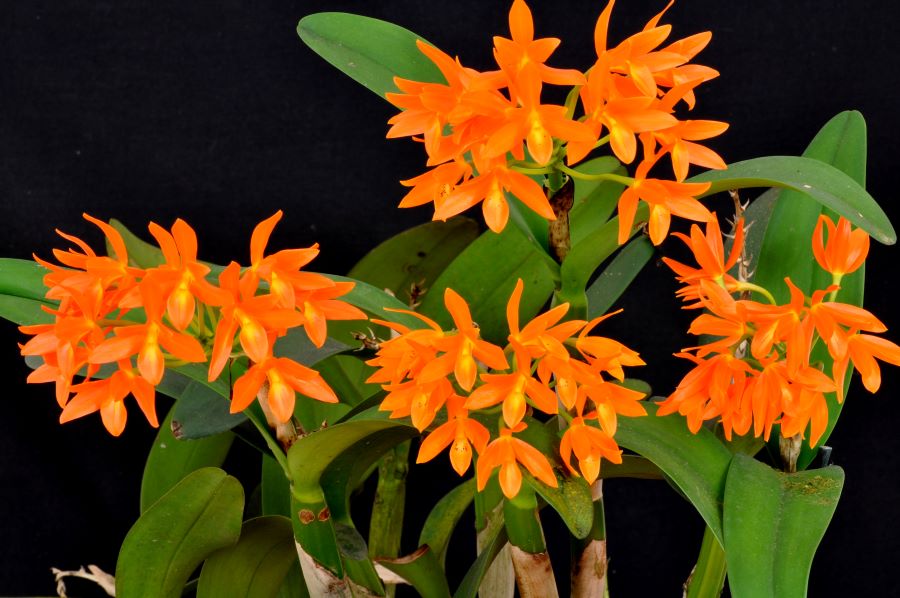
Recent research from dark rain and cloud forests has also shown that reduced photosynthesis takes place for epiphytes growing on the ground or near the ground due to the lack of light. As a result, the plants have less sugar available for growth and correspondingly less sugar is released to the roots, which also nourish soil life. Under these circumstances, the plants would not live long. However, they manage to do this by actively absorbing amino acids, minerals and even humus components through their leaves. This natural foliar fertilization comes from the top layer of the forest where fine (organic) dust particles, dead insects, bird droppings, algae and moss accumulate. When it rains, these released nutrients fall onto underlying plants as foliar fertilizer. To that extent the observations made by me about positive reactions of the orchids to organic fertilizers used by me can be explained.
However, foliar fertilization should always only be a supplementary measure to the nutrition of the orchids.
It is interesting to note that while many orchid people occasionally measure the conductivity of their irrigation water, they never actually measure the salinity of the plant matter. Little attention is also paid to the pH value of the irrigation water.
To prevent fertilizer salts from accumulating in the planting material, the textbooks recommend regular rinsing of the planting material with rainwater. However, the effectiveness of this method has probably never been tested or measured by the authors. According to my investigations and measurements of the substrate, even regular rinsing of the plant material hardly reduces the conductivity.
Depending on the species, the orchids should be repotted annually, but no later than after two years, in order to prevent excessive accumulation of nutrient salts in the plant material. In the textbooks, the reason given for this is predominantly the decomposition (conversion) of the substrate. On the other hand, the enrichment with salts, which leads to partially toxic reactions in the orchid roots, is more likely. I had already referred to the use of FloraClean (today: FlashClean) in a previous article.
As an alternative to nutrient salts, I had experimented with organic components as fertilizer for my orchids. However, these fertilizers have to be biologically converted by microorganisms before they can be used. This ultimately results in “nutrient salts” such as N, P or K.
However, I found it much more interesting that certain orchids such as coelogyna and lycasta developed fine root hairs when fertilized with organic fertilizers, provided the roots had contact with the substrate. I had never heard of these observations before. Are these fine root hairs perhaps the reason why many orchids grow much larger in their natural habitat than in cultivation? As soon as a salt fertilizer is used, these fine root hairs disappear.

Mr. Reiterer published an interesting article on the subject of "substrate" in issue 3 / 2018 of the Orchideenjournal. He has been cultivating his orchids exclusively in "Styrowol" for several years.
Because these styrofoam strips u. do not enrich with excess nutrient salts, after several consultations with Mr. Reiterer, I repotted my entire orchid stock in self-made Styrowol at the beginning of 2018. I used a paper shredder to process 2 mm thick styrofoam wallpaper into 4 mm wide styrofoam strips. Another advantage of these styrofoam strips is that orchids can almost no longer be "shed". So far I have had to struggle with wet plant matter of all kinds in my greenhouse, especially in winter, which has repeatedly led to rot.
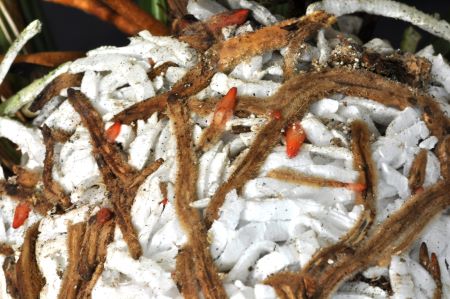
In the following I would like to present some observations on how my culture has changed as a result of the new substrate. But first, a few basic conditions of my culture should be shown: My orchid greenhouse is connected to the house heating, which is operated with a heat pump with a low flow temperature of max. 38°C. With the convector heaters used in the greenhouse, this low level of heat emission was not sufficient to ensure an appropriate temperature and to allow the plant matter to dry quickly, although the orchids were hardly watered over the winter months. With the Styrofoam plant material, these problems could be minimized, but not completely eliminated. There were still problems with rot. Even the use of different fungicides brought little change.
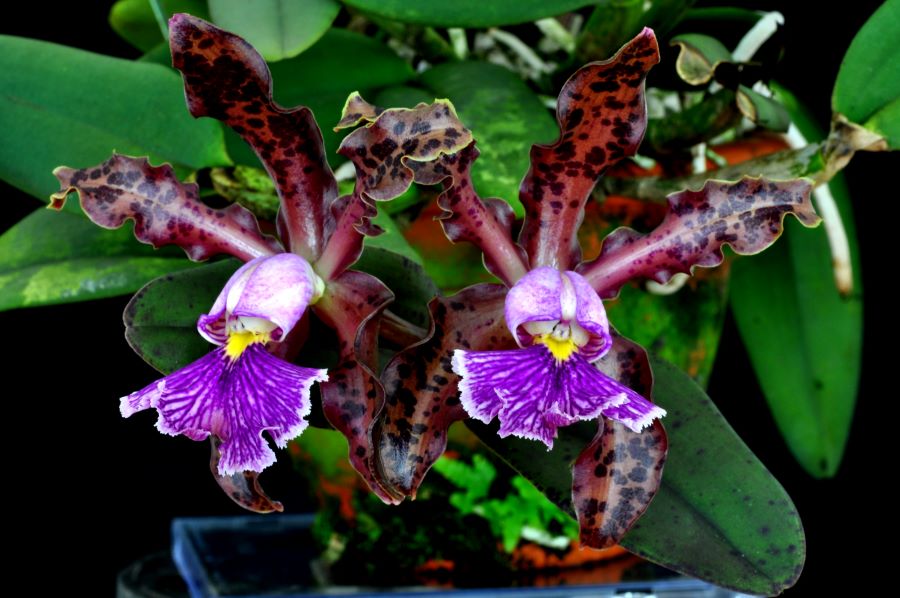
An improvement in this problem brought about a coincidence. The irrigation pump in the greenhouse broke after almost 30 years. Apart from the pump, all hose lines were also replaced. I was horrified to find that a 2-3 mm layer had built up in the hoses, which was probably caused in particular by the experiments with organic fertilizers. When the pump was turned on, a foul smell had made itself felt in the last few months. For this reason I always let 10 liters run away and only then watered the orchids. The smell was gone, but the spores of the rot fungi etc. were probably distributed when the orchids were watered. I hadn't thought about that at first - probably because of the watering routine. I now disinfect the pump and hoses with hydrogen peroxide and peracetic acid before watering. Lo and behold: there are hardly any rot problems with the orchids. However, it is unclear whether the new substrate also made a contribution.
In addition, the heating convectors, which were originally purchased for a flow temperature of 60°C, were subsequently equipped with radiator boosters. These are PC fans connected in series that are clicked under the convectors with magnets. The temperature in the greenhouse could be increased by 3-4°C with this simple but effective measure.
I was also looking for a remedy that could strengthen the orchids' defenses. Yucca schidigera or aloe vera extract is said to meet these requirements. Both plants are almost never attacked by harmful fungi or pests. The extracts also represent a natural wetting agent, which reduces the surface tension of the water on the leaves or in the soil and can better transport the water with the nutrients into the leaves. If you are looking for more information on this interesting topic, you will find it at www.aloeverafertilizer.com
In an earlier article (Issue 4 / 2010 Orchideenjournal) I also pointed out another possible positive effect on plant growth and the health of our orchids through the addition of fulvic or humic acid.
With all of the measures presented, satisfactory growth in orchids up to spring 2020 has so far been observed. The rotting problem has also decreased. Nevertheless, some orchids had not started flowering. This once again gave me no peace, I wanted to have a beautiful sea of flowers in my greenhouse!
For the further changes in my culture I have to go back a bit first. In addition to orchids, I am also interested in pitcher plants (Nepenthes). A small cluster of fifteen hybrids and natural forms grew quite nicely in the cold section of my greenhouse, but the plants barely formed pitchers on the new leaves.
A tip from a Nepenthes enthusiast put me on the right track. He cultivates his Nepenthes without any shading in a greenhouse!
So I recently dismantled a small part of my permanent shading of the greenhouse especially for the Nepenthes. After a short time, pitchers grew again on some new leaves - apparently the lack of light was the problem! Could that also be the reason why some orchids in my greenhouse under the permanent shading from 15.2. until 15.10. of each year did not get enough light for flower induction? I really wanted to test that. Said and done.
The greenhouse now has movable shading mats that can shade individual parts of the greenhouse depending on the amount of sunlight. The result is amazing. After just a few weeks, orchids have bloomed that had not bloomed for a few years before. Can this be coincidence?
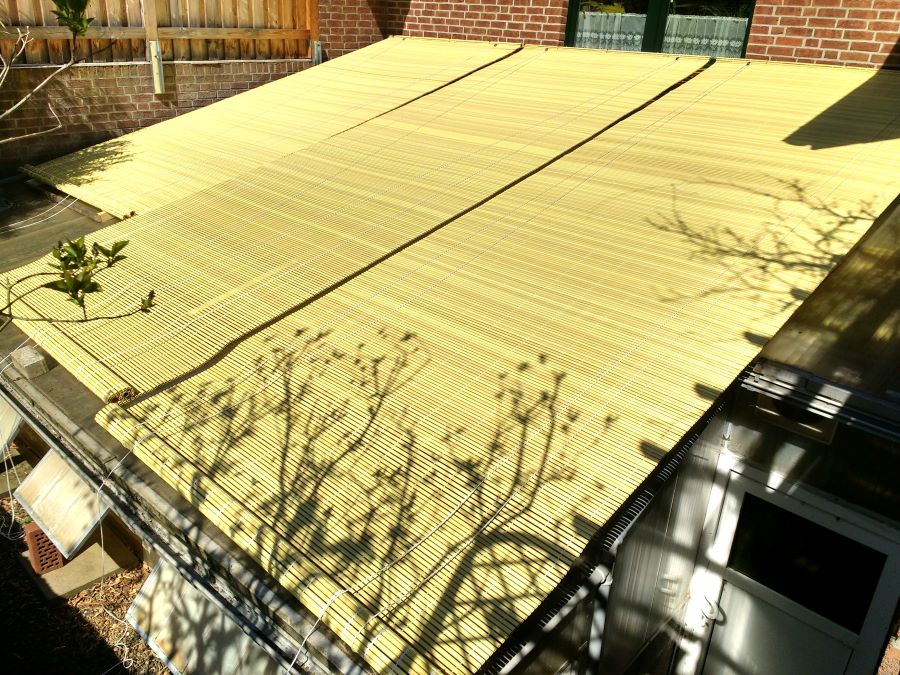
Finally, I would like to summarize the measures that have brought significant improvements to my orchid culture. I also use information from my previous articles.
- Please only buy orchids that can also be cultivated in the available culture room.
- If possible, only water with rainwater or osmosis water - tap water or well water can only be used in individual cases.
- If salt fertilizers are used, all the necessary nutritional elements should be included.
- If organic fertilizers are used, they should already have been converted by microorganisms.
- Observe the permitted salt content in the irrigation water and in the substrate!
- Transplant the plants regularly every 12 to 24 months!
- Plant protection: Check all orchids regularly and treat them in good time with the right products (plant protection department in the flower market)!
It is important that you regularly question your own cultural activities. A good opportunity for this is the exchange of experiences with orchid friends on group evenings, on personal visits or at orchid exhibitions.


